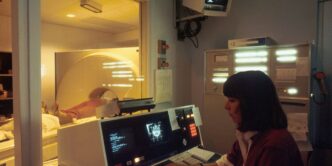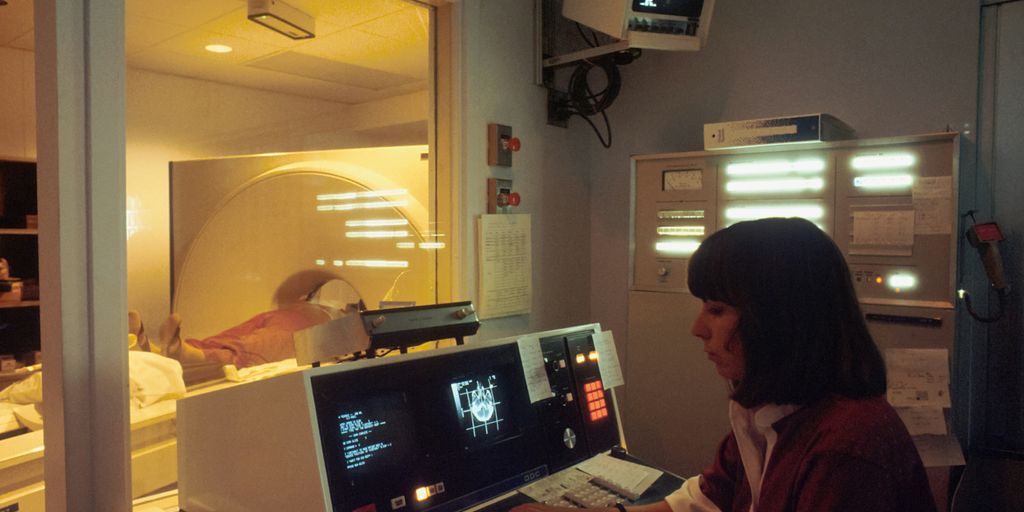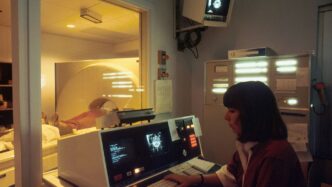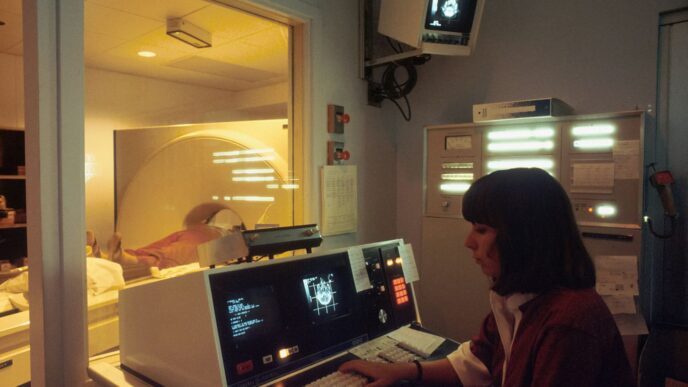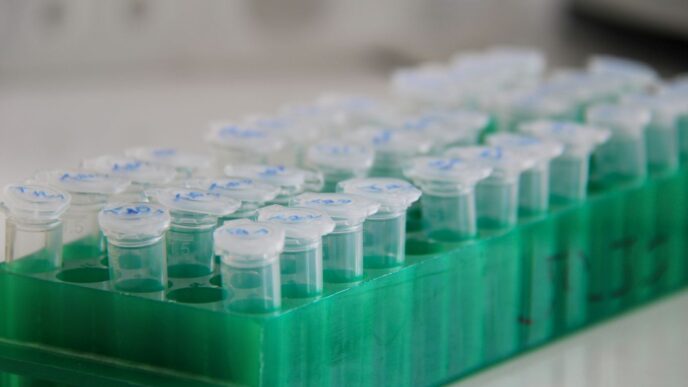It’s pretty wild how much computers have changed things in healthcare, right? I mean, they’re not just for typing up notes anymore. From helping doctors figure out what’s wrong to letting you chat with your doctor from your couch, the computer in healthcare is really stepping up. It’s making things faster, more accurate, and honestly, a lot more convenient for all of us. We’re seeing everything from super-smart AI helping with diagnoses to tiny devices that keep track of your heart rate, all thanks to the computer.
Key Takeaways
- Computers are making diagnoses and treatments much better, thanks to AI and data analysis for personalized medicine.
- Getting healthcare is easier now, especially for people far from clinics, with things like telemedicine and remote monitoring.
- Patients can be more involved in their own health using devices and online tools to track and manage their well-being.
- New technologies like 3D printing and robots are changing how medical procedures are done and planned.
- Electronic health records are making patient information easier to manage and share, which can help avoid mistakes.
Transforming Patient Diagnosis and Treatment
It’s pretty wild how much computers are changing how doctors figure out what’s wrong with us and how they fix it. We’re talking about a whole new ballgame here, moving beyond just educated guesses to really pinpointing issues with incredible accuracy. This shift is making healthcare smarter, faster, and way more tailored to each person.
Artificial Intelligence in Medical Diagnosis
Think of AI as a super-powered assistant for doctors. It can sift through mountains of patient data – like scans, lab results, and medical histories – way faster than any human could. AI algorithms are getting really good at spotting subtle patterns that might signal a disease early on, sometimes even before symptoms show up. This means quicker diagnoses and a better chance for successful treatment. It’s like having an extra set of incredibly sharp eyes looking at your case.
Personalized Medicine Through Data Analytics
We’re all different, right? Our bodies react to treatments in unique ways. That’s where data analytics comes in. By looking at your specific genetic makeup, lifestyle, and medical history, doctors can figure out the best treatment plan just for you. This isn’t a one-size-fits-all approach anymore. It’s about using all that information to make sure the medicine you get is the most effective, with the fewest side effects. It’s a big step towards truly individualized care, and it’s exciting to see how it’s developing. You can find more about how data is shaping medicine at [afa4].
Predictive Analytics for Early Disease Detection
This is where computers really get to shine in preventing problems before they start. Predictive analytics uses historical data and current trends to forecast potential health risks. Imagine a system that flags you as having a higher chance of developing a certain condition based on your data, allowing doctors to intervene early with lifestyle changes or preventative measures. It’s about getting ahead of the curve, catching things in their infancy when they’re much easier to manage. This proactive approach could seriously change how we deal with chronic illnesses.
Enhancing Healthcare Accessibility and Equity
It’s pretty amazing how technology is stepping in to make sure everyone gets a fair shot at good health, no matter where they live or what their situation is. Think about it – people in rural areas or those who can’t easily get to a doctor’s office can now connect with medical professionals without leaving their homes. This is a huge deal for folks who might otherwise go without care. These digital tools are really leveling the playing field.
Telemedicine for Remote Consultations
Telemedicine has opened up a whole new world for getting medical advice. Instead of needing to travel, patients can have video calls with doctors and specialists. This is especially helpful for follow-up appointments or when someone just needs a quick check-in. It cuts down on travel time and costs, making healthcare much more convenient. It’s a big step towards making sure that distance doesn’t prevent people from getting the care they need. Many people are finding telehealth services to be a lifesaver.
Remote Patient Monitoring Systems
These systems are like having a doctor’s eyes on you, even when you’re at home. Devices can track things like blood pressure, glucose levels, or heart rate and send that information straight to your healthcare team. This means doctors can spot potential problems early, before they become serious. It’s particularly useful for people with chronic conditions who need regular check-ups. This kind of constant oversight can really help manage long-term health issues more effectively.
Bridging Gaps in Underserved Areas
For communities that have historically struggled to access healthcare, technology is a game-changer. Telemedicine and remote monitoring are directly addressing the shortage of doctors in rural and underserved areas. By using these tools, healthcare providers can reach more patients, offering services that were previously out of reach. This not only improves health outcomes but also helps reduce the disparities that have existed for too long. It’s about making sure that everyone, everywhere, has a chance to be healthy.
Empowering Patients Through Technology
It feels like just yesterday we were passively receiving medical advice, right? Now, things are really changing. Technology is putting more control directly into our hands when it comes to our own health. We’re not just patients anymore; we’re active participants.
Wearable Devices for Health Tracking
Think about those smartwatches and fitness trackers. They’re not just for counting steps anymore. These gadgets are constantly collecting data about our bodies – heart rate, sleep patterns, activity levels, even things like blood oxygen. This information gives us a real-time look at our health, often before we even feel sick. It’s like having a personal health dashboard right on your wrist. This kind of data can be super helpful when talking to your doctor, giving them a clearer picture of what’s going on day-to-day. You can even share this information directly with your healthcare provider, making those conversations much more productive. It’s a big step towards understanding our bodies better and catching potential issues early. For more on how these devices are changing the game, check out digital health tools.
Patient Portals and Health Records Access
Remember the days of waiting for paper records or calling the doctor’s office for test results? Those days are fading fast. Most healthcare systems now have online patient portals. These portals let you see your medical history, lab results, upcoming appointments, and even communicate securely with your doctor’s office. Having all your health information in one place, accessible whenever you need it, is a game-changer. It means you can be more informed about your care and make better decisions. It’s about transparency and giving you the tools to manage your own health journey.
Active Role in Health Management
With all this new tech, we’re really stepping up. We can track our progress, set personal health goals, and even get reminders for medications or check-ups. It’s about taking ownership. Instead of just reacting to illness, we’re becoming more proactive about staying well. This shift means we’re more likely to stick to treatment plans and make healthier lifestyle choices because we can see the direct impact of our actions. It’s a move towards a more personalized approach to health, where we’re partners with our healthcare providers, not just recipients of care.
Revolutionizing Medical Procedures and Planning
Computers are really changing how doctors do things, making procedures more precise and planning much smarter. It’s not just about better tools; it’s about a whole new way of thinking about surgery and patient care.
3D Printing for Custom Prosthetics and Implants
Remember when prosthetics were pretty much one-size-fits-all? Well, those days are fading fast. Thanks to 3D printing, we can now create custom-fit prosthetics and implants that are perfectly tailored to an individual’s body. This technology uses digital scans to build everything from artificial limbs to complex joint replacements, layer by layer. This level of personalization means better comfort, improved function, and a more natural feel for the patient. It’s also being used to print patient-specific anatomical models, which surgeons can use to practice complex operations before even stepping into the operating room. This can really cut down on surprises during surgery and lead to better outcomes. It’s amazing how this tech is making healthcare more about the individual.
Robotics in Surgical Applications
Robots in the operating room aren’t science fiction anymore. Systems like the da Vinci surgical system have been around for a while, allowing surgeons to perform minimally invasive procedures with incredible precision. Think tiny incisions, less blood loss, and faster recovery times for patients. These robotic arms are controlled by the surgeon, who gets a magnified, 3D view of the surgical site. This means steadier
The Impact of Electronic Health Records
Electronic Health Records, or EHRs, are basically digital versions of a patient’s paper chart. Think of them as a comprehensive medical history, all stored in one place. This shift from paper to digital has been a massive change in healthcare IT, really picking up steam after the HITECH Act in 2009 provided incentives for adoption. Now, they’re pretty much everywhere across the US.
Streamlining Patient Data Management
Before EHRs, managing patient information was a real headache. Records were scattered, often incomplete, and getting them from one doctor to another was a slow process. EHRs change all that. They create a single, organized digital file for each patient, containing everything from past diagnoses and medications to lab results and treatment plans. This makes it much easier for healthcare providers to access the information they need, when they need it. It’s like having a central library for all your health details. This consolidation significantly reduces the chances of errors related to missing or outdated information.
Improving Collaboration Among Healthcare Professionals
When doctors, nurses, and specialists all have access to the same, up-to-date patient information, teamwork gets a whole lot better. Imagine a patient seeing multiple doctors; with EHRs, each doctor can see what the others have done, what medications are prescribed, and what tests have been run. This shared view helps prevent duplicate tests, avoids conflicting treatments, and generally leads to more coordinated care. It’s easier for everyone involved to be on the same page, which is a big win for patient safety and treatment effectiveness. For instance, a study by the University of Michigan showed that moving to electronic records led to a 3% drop in outpatient care costs, saving about $5.14 per patient monthly, which adds up fast in large hospital systems.
Reducing Medical Errors Through Centralized Data
One of the biggest advantages of EHRs is their potential to cut down on medical mistakes. When all your health data is in one digital spot, it’s easier for systems to flag potential issues. For example, an EHR might alert a doctor if a new prescription could interact negatively with a medication the patient is already taking. It can also catch allergies or contraindications that might be missed with paper records. This centralized approach means fewer mix-ups with medications, dosages, and treatments, ultimately making care safer for everyone. Getting different health systems to share this data smoothly is still a challenge, with issues like outdated technology and data silos needing attention, but the benefits of interoperability are clear for better patient outcomes.
The Evolving Healthcare Workforce

The way we work in healthcare is changing, and it’s all thanks to computers and new tech. It’s not just about doctors and nurses anymore; a whole bunch of new jobs are popping up, and existing ones are getting a serious upgrade. Think of it like this: the tools have changed, so the people using them need to adapt too. This shift means we need people who understand both medicine and technology.
New Roles in Health Informatics
Health informatics specialists are the bridge between the tech world and the patient care world. They help set up and manage the computer systems that doctors and nurses use every day. It’s a pretty important job because if the systems aren’t working right, patient care can suffer. They’re basically making sure the technology actually helps, instead of getting in the way. It’s a field that’s really growing as more hospitals and clinics adopt digital tools.
Data Scientists in Healthcare Analytics
We’re collecting more health information than ever before, and someone needs to make sense of it all. That’s where data scientists come in. They use fancy computer programs to look at all this patient data and find patterns. These patterns can help predict diseases before they get bad or figure out the best way to treat someone based on their specific situation. It’s like being a detective, but for health, and it’s making a big difference in how we approach patient care. You can find out more about how technology is changing healthcare at [0d04].
Cybersecurity Experts for Data Protection
With all this digital information flying around, keeping it safe is a huge deal. Cybersecurity experts are the guardians of patient data. They work to stop hackers and make sure that sensitive information stays private and secure. It’s a constant battle, as the threats are always changing, but it’s absolutely vital for maintaining trust in the healthcare system. Without them, all the benefits of digital health could be undermined by security breaches.
Continuous Training for Technological Advancements
Because technology moves so fast, healthcare workers can’t just learn something once and be done. They need to keep learning. Hospitals and clinics have to provide ongoing training so everyone stays up-to-date with the latest software, equipment, and best practices. This could mean workshops, online courses, or even just on-the-job learning. It’s a big commitment, but it’s necessary to make sure everyone is using the new tools effectively and safely. Keeping skills sharp is key to providing the best care possible.
Securing and Managing Health Data
Keeping patient information safe and sound is a big deal, right? With all the new tech in healthcare, we’re collecting more data than ever. This means we really need to think about how we protect it. It’s not just about following rules, though that’s important. It’s about making sure people trust that their most personal details are handled with care. Protecting sensitive patient information is paramount to maintaining trust and the integrity of healthcare systems.
Blockchain for Secure Data Sharing
Think about how many different doctors or specialists a person might see. Each one might have a piece of the puzzle. Blockchain technology, the same stuff behind cryptocurrencies, could be a game-changer here. It creates a shared, unchangeable record that different providers can access securely. This means a patient’s history could be shared more easily between clinics, but without the risk of someone messing with it or peeking where they shouldn’t. It also helps keep track of things like medications, making sure they are what they say they are from the factory to the pharmacy. It could even be the backbone for a truly connected system of health records, letting patients share their info with any doctor they choose, safely and simply. You can find out more about how Canada is looking at securing health data.
Protecting Sensitive Patient Information
We’ve got rules like HIPAA that lay out how patient data should be handled. It’s all about keeping things private, making sure the information is correct, and that it’s available when it needs to be. Healthcare places have to use things like access controls, which means only certain people can see certain data, and audit trails, which track who looked at what. If they don’t follow these rules, there can be big fines, and even criminal charges. So, it’s a pretty serious business.
Ensuring Data Integrity and Privacy
Beyond just keeping data private, we also need to make sure it’s accurate and consistent. This is where data governance comes in. It’s like having a set of rules for how information is managed within a healthcare organization. It makes sure the data is good quality and used the right way. Sometimes, data is collected in ways that might not represent everyone equally, which can cause problems, especially when AI is involved. We need to be careful that the data used by AI systems is accurate, secure, and actually reflects the people it’s supposed to help. This means being clear about who is in the data sets, like their age, gender, and where they live. It’s a complex area, but getting it right is key for fair and effective healthcare.
Looking Ahead: The Ongoing Digital Shift in Healthcare
So, where does all this leave us? It’s pretty clear that computers and all sorts of new tech aren’t just tools anymore; they’re really changing how we get healthcare. From making sure doctors have all your info in one spot with electronic records to letting you chat with a doctor from your couch using telemedicine, things are moving fast. AI is even starting to help figure out what’s wrong and how best to treat it. It’s not perfect, and there are still hurdles to jump, like keeping all that data safe and making sure everyone can actually use these new systems. But the direction is set: healthcare is becoming more about you, the patient, and getting you the right care, right when you need it. It’s an exciting time, and it’s only going to keep evolving.
Frequently Asked Questions
How are computers helping doctors find sicknesses and decide on treatments?
Computers and technology are changing how doctors help people. For example, smart computer programs can help doctors find sicknesses faster and more accurately. Also, computers help doctors create special treatments just for you, based on your unique body and health history.
How does technology make healthcare easier to get for people who live far from doctors?
Technology like video calls with doctors (telemedicine) and special devices that watch your health from home let people see doctors even if they live far away or can’t easily travel. This makes healthcare easier to get for everyone, no matter where they live.
Can technology help me take a more active role in managing my own health?
Yes! Things like smartwatches or fitness trackers let you keep an eye on your own health. You can also use online portals to see your health records and talk to your doctor, which helps you be more involved in staying healthy.
How are computers and robots changing surgeries and medical devices?
Computers help create special body parts, like artificial limbs or hip replacements, that fit you perfectly. Robots are also being used in surgeries to help doctors perform operations with more precision and less invasion.
What are Electronic Health Records and why are they important?
Electronic Health Records (EHRs) are like digital files for your health information. They make it easier for doctors to share information, reduce mistakes, and keep all your health details organized in one safe place.
What new jobs are being created in healthcare because of technology?
As technology grows in healthcare, new jobs are appearing for people who manage health information and analyze data. There are also jobs for experts who protect patient information from hackers. Everyone in healthcare needs to keep learning to use new tools.

